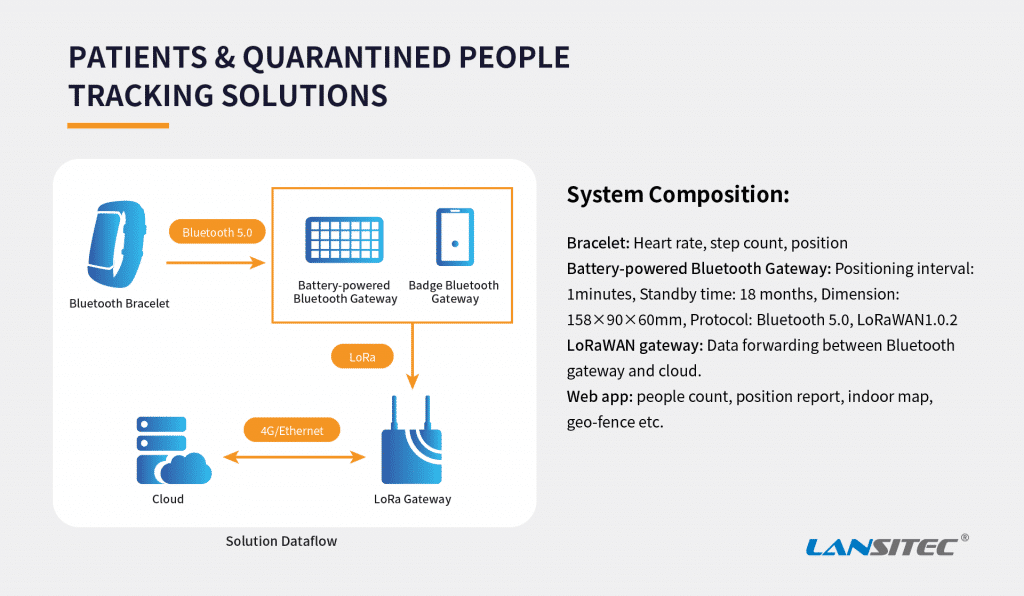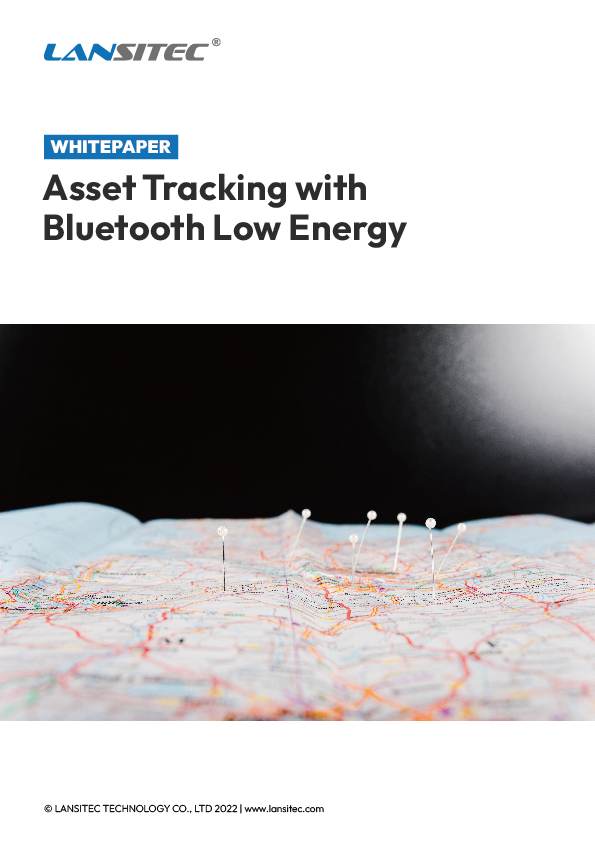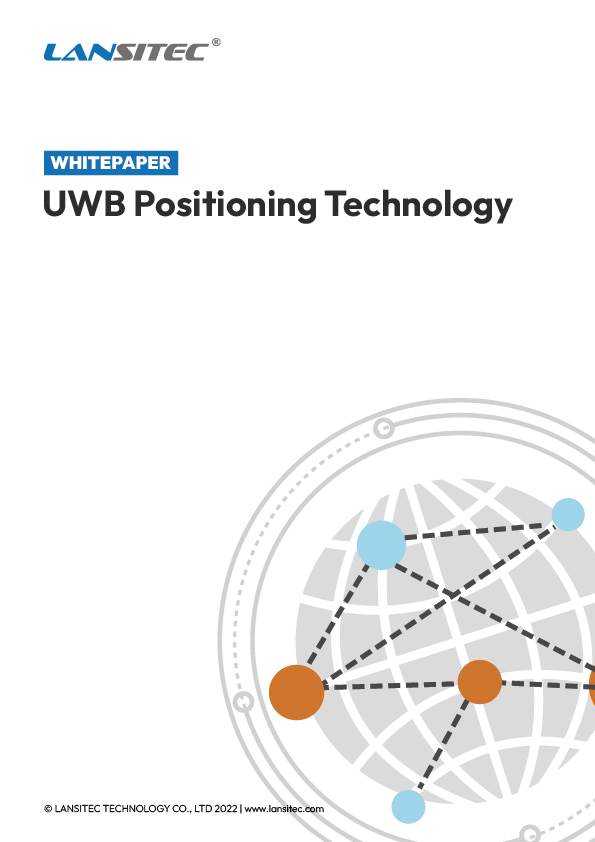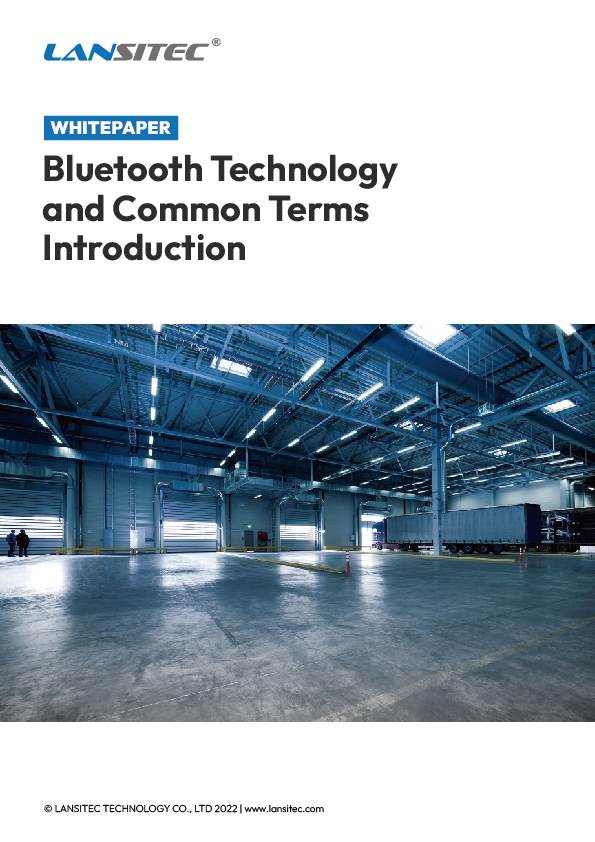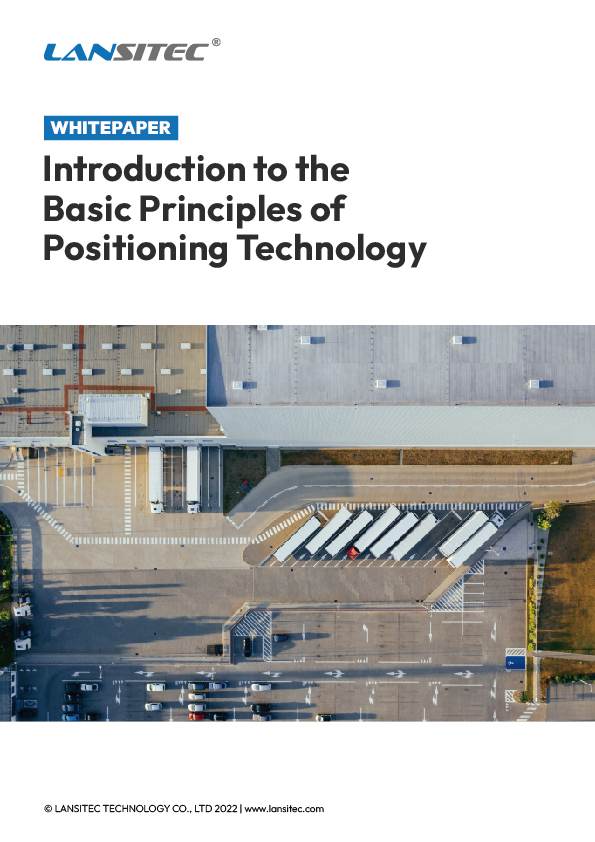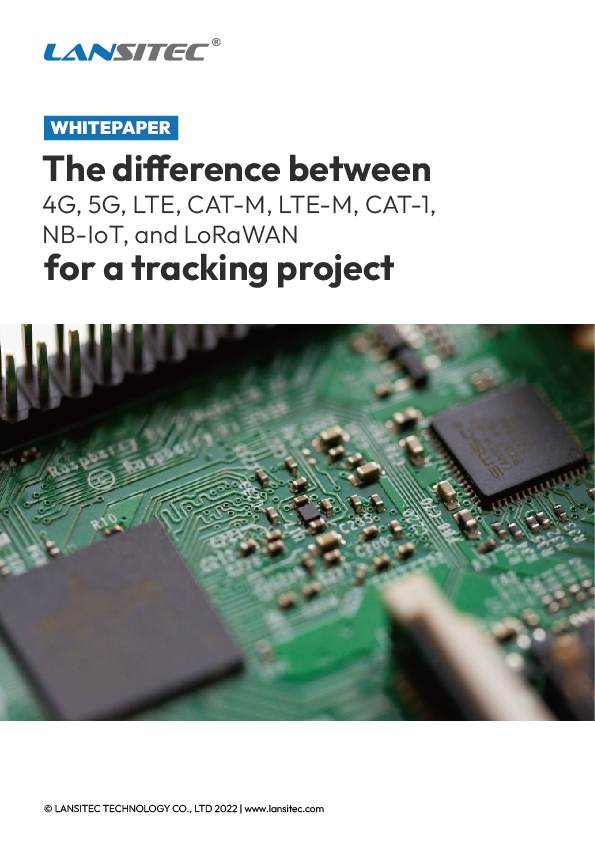一、引言
大型活动管理的形势瞬息万变,特别是在保持社交距离等健康和安全协议的背景下,需要创新的技术解决方案。这一理论 案例研究 探索利用 Lansitec 接触者追踪徽章,一款利用最先进的蓝牙 5.0 和 LoRaWAN 技术的设备,可用于事件管理、人群控制和社交距离合规领域。
Lansitec 徽章的设计旨在确保在各种环境下实现最佳功能,其特点是坚固耐用 室内追踪 精度、远距离通信能力以及地理围栏和低功耗等用户友好功能。本研究假设徽章在大型活动环境中的应用,研究其在增强与会者安全、简化人群管理和确保遵守社交距离准则方面的潜力。
通过这项研究,我们旨在从理论上评估徽章在实时监控人群密度、与会人员之间的距离检测以及高效管理活动空间方面的能力。重点是探索如何利用其集成技术(尤其是用于短距离通信的蓝牙和用于更广泛区域覆盖的 LoRaWAN 的组合)来维持安全标准,而不会影响活动体验。
二、技术概述
利用蓝牙 5.0 和 LoRaWAN
兰赛特 接触者追踪徽章作为本理论案例研究的基石,它是一种先进的技术解决方案,旨在实现精确的室内跟踪和有效的接触者追踪,在大型活动管理中尤为重要。徽章的核心利用了两项关键的无线技术: 蓝牙 5.0 和 LoRaWAN.
- 蓝牙 5.0: 该徽章采用了蓝牙 5.0,这是蓝牙技术系列中其前代产品的重大升级。蓝牙 5.0 以其扩大的范围、增强的数据广播容量和与其他无线技术的增强互操作性而闻名。在 Lansitec 徽章中,蓝牙 5.0 可实现精确的室内跟踪,精度为 2 到 3 米。这种精度对于在密集人群场景(例如活动中)中进行有效的近距离检测至关重要。此外,徽章使用蓝牙 5.0 进行实时定位系统 (RTLS),可在活动场所内精确实时地跟踪徽章佩戴者。增强的范围(高达 25 米的视线)和广播更丰富、更复杂数据的能力使蓝牙 5.0 成为管理与会者互动和动作的理想选择。
- LoRaWAN(长距离广域网): 作为蓝牙 5.0 的补充,Lansitec 徽章配备了 LoRaWAN 技术。LoRaWAN 是一种专为长距离无线数据通信而设计的协议,特别适合覆盖传统的 Wi-Fi 或蜂窝连接可能无法使用的大型活动空间。LoRaWAN 的优势在于其长距离能力(在城市地区超过 1 公里)以及在密集或阻塞环境中的出色穿透力,即使在具有挑战性的情况下也能确保连接。徽章采用 LoRaWAN 协议版本 1.0.2B,支持各种频段以满足区域要求。这项技术对于将跟踪系统的覆盖范围扩展到蓝牙的限制之外至关重要,从而实现全面的覆盖范围,以监控广阔活动场地的人群运动和互动。徽章的 LoRa 接收器具有高灵敏度(-139 dBm 至 -137 dBm,具体取决于频率),确保即使是最弱的信号也能被检测到,从而提高了跟踪系统的可靠性。
蓝牙 5.0 和 LoRaWAN 相结合, Lansitec 徽章 提供双层跟踪和监控方法。蓝牙在较小、较狭窄的空间中提供精确度和易用性,而 LoRaWAN 则将徽章的实用性扩展到更大、更复杂的活动环境。这种组合可确保在整个活动空间中准确可靠地跟踪与会者,从而大大有助于有效的人群管理和遵守社交距离协议。
接近检测、接触追踪和警报系统
Lansitec 接触者追踪徽章集成了先进的蓝牙 5.0 和 LoRaWAN 技术,可作为近距离检测、接触者追踪和在事件管理背景下实施警报系统的多功能工具。本节深入探讨这些功能的运行机制,这些功能是徽章功能的核心。
- 接近检测:徽章采用 BLE(低功耗蓝牙)技术进行近距离检测。这主要通过使用 RSSI(接收信号强度指示器)值来实现,RSSI 值是接收无线电信号中功率的度量。RSSI 值用于估计徽章之间的距离,从而能够在预定义的阈值内检测近距离,通常默认设置为约 2 米,但可根据活动要求进行调整。当两个徽章处于此设置的近距离限制内时,它们会记录彼此的存在,从而有效地跟踪与会者之间的近距离互动。
- 接触者追踪:在接触者追踪的背景下,徽章会记录在预定义的接近范围内发生的互动。这些数据(包括互动的持续时间和频率)存储在徽章的内存中。使用蓝牙连接,这些数据可以传输到中央服务器或通过移动应用程序访问以进行分析。在理论活动场景中,此功能允许活动组织者追踪和分析与会者互动的模式,这对于识别潜在的高密度区域和接触群至关重要。在发生与健康相关的事件时,这些数据对于追踪潜在的传播链非常有价值。
- 警报系统:徽章配有内置蜂鸣器和振动器,它们是其警报系统不可或缺的一部分。当徽章在设置的距离限制内检测到另一个徽章时,这些组件就会激活,作为触觉和听觉提醒,以保持社交距离。蜂鸣器以 75dB 发出声音警报,而振动器以低于 50dB 的机械噪音发出物理警报,确保提醒明显但不会过于干扰。这种双重警报系统在拥挤和嘈杂的活动环境中特别有效,因为在这种环境中,视觉提示可能会被忽略。
此外,徽章的 NFC(近场通信)功能可以轻松管理和配置这些功能,使活动组织者能够快速调整接近阈值或警报类型等设置,以适应不断变化的需求或活动场地内的不同区域。
总而言之,Lansitec 接触者追踪徽章是一种全面的工具,可用于管理人群动态和确保安全协议。它巧妙地利用蓝牙进行近距离检测和接触者追踪,再加上有效的警报系统,从理论上讲,它在任何大型活动管理场景中都是一项强大的资产,在这些场景中,保持社交距离和监控与会者的互动至关重要。
三、理论框架
事件设定中的假设情景
为了有效探索 Lansitec Contact Tracing Badge 在事件管理领域的应用,考虑各种假设场景很有用。这些场景有助于理解此类技术在现实环境中可能遇到的实际挑战和机遇。
- 音乐节:想象一下一个大型户外音乐节,有多个舞台和数千名参与者。徽章可用于监控各个地点的人群密度,当某些区域过于拥挤时提醒参与者,从而帮助疏散人群。
- 会议或贸易展览:在会议等室内环境中,徽章可以帮助追踪与会者在不同大厅和展位之间的活动。它还可以帮助管理主题演讲或特别展览的排队,确保保持社交距离。
- 体育赛事:在体育场馆,徽章可用于管理进出体育场的人流,以及监控看台和美食广场等公共区域的人群密度。
在人群管理和社交距离中使用物联网设备的理论基础
- 实时数据收集与分析:Lansitec 徽章等物联网设备能够收集与会者位置和互动的实时数据。这些数据对于做出明智的人群管理决策(例如识别和缓解拥堵点)至关重要。
- 精密度和准确度:蓝牙 5.0 和 LoRaWAN 等先进技术可确保在活动空间内精确、准确地跟踪个人。这种精确性是实施有效社交距离措施的关键。
- 积极应对拥挤:物联网设备的实时特性允许采取主动的人群管理方法。组织者可以在潜在问题升级之前做出反应,例如重新安排人流或修改活动时间表以疏散人群。
- 增强与会者体验:通过确保安全的环境,与会者可以获得更愉快的体验。徽章的警报系统可以温和地提醒与会者保持社交距离,而不会打扰他们。
- 可扩展性和灵活性:物联网设备可以根据事件的规模进行扩大或缩小,并可以根据特定需求进行编程,使其成为适用于各种事件类型的多功能工具。
- 数据驱动的健康与安全合规:在疫情等健康危机的背景下,确保遵守健康指南至关重要。物联网设备提供了一种数据驱动的方法来执行此类指南,从而增强了整体安全性。
案例研究设计
假设大型事件的描述
徽章的理论部署
参会者分布:
- 抵达后,每位参会者都会收到一张 Lansitec 接触者追踪徽章,作为欢迎礼包的一部分。徽章上预先登记了参会者的门票信息。
- 与会者了解到徽章的用途,主要是它在确保社交距离和加强安全方面的作用。
- 活动工作人员也会获得一枚徽章,因为他们将生成另一组数据,有助于一般活动管理和部门协调。
监测站设置:
- 节日场地各处均设有多个监控站。这些监控站配备了先进的接收器,可通过蓝牙和 LoRaWAN 连接到徽章。
- 这些站点从徽章收集实时数据,例如位置坐标和近距离交互。
- 建立一个中央监控中心,汇总和分析所有站点的数据。
与事件管理系统集成:
- 徽章系统与音乐节的活动管理软件集成。这种集成可以实时了解人群动态和参与者的动向。
- 活动管理团队使用这些数据来做出明智的决策,例如调整人群流量、更改日程安排或紧急响应。
- 徽章的数据有助于有效地管理资源,例如引导安全人员前往密度高或有潜在风险的区域。
增强体验的附加功能:
- 该徽章还可作为节日期间无现金交易的数字钱包,简化购买流程并减少排队时间。
- 观众可以选择接收有关他们最喜欢的表演的通知,确保他们不会错过演出,同时保持安全距离。
选择正确的 Lansitec 解决方案
为了确定哪种解决方案更适合 HarmonyFest 音乐节案例研究,我们需要考虑活动的具体要求和每个系统的功能:
- B-固定:此解决方案涉及固定蓝牙网关,非常适合静态、明确界定的位置,如舞台、食品摊或入口。它可有效监控特定区域,并且不易发生与移动相关的错误。
- B-移动:该解决方案提供移动蓝牙信标,更加灵活和动态。它更适合跟踪不同位置的移动物体或人员,提供更广泛的覆盖范围和适应不断变化的人群动态的能力。
对于 HarmonyFest 这样的活动,参与者的移动性和大面积覆盖是关键考虑因素,B-Mobile 可能会更有效。它能够适应不同的场景,能够跟踪移动中的参与者,并且覆盖范围更广,使其成为动态活动环境的更合适选择。B-Mobile 解决方案能够灵活地跟踪整个节日区域的人员和资产,这与管理 HarmonyFest 这样的大型动态活动的需求非常吻合。
结合B-Mobile解决方案架构,HarmonyFest的案例研究设计可进行如下调整:
- 移动信标的动态部署:HarmonyFest 的参与者佩戴的 Lansitec 徽章内嵌有移动信标。这些信标会持续发射蓝牙信号,这些信号会被节日场地各处的接收器接收。
- 实时运动追踪:B-Mobile 解决方案可以实时跟踪与会者的动向。此功能对于动态监控和管理人群流量至关重要,因为与会者会在舞台、食品摊位和其他景点之间移动。
- 灵活的数据分析和人群管理:来自移动信标的连续数据流使活动管理团队能够实时分析人群密度和移动模式。这些信息可用于立即做出决策,例如重新规划人流路线或调整活动时间表以防止过度拥挤。
- 增强安全性和体验:B-Mobile 解决方案提供的实时数据有助于有效地维护社交距离协议,并确保在整个活动期间遵守安全措施。
五、接近检测和警报机制
拥挤环境中的高级接近检测
双重警报系统的有效性
- 声音警报:徽章发出的声音为 75 分贝,略高于正常谈话音量。挑战在于确保这些警报在通常充满音乐和人群噪音的环境中可以听到。其有效性取决于节日期间各个地点的环境噪音水平。例如,与休闲区等较安静的区域相比,现场表演舞台附近的警报可能需要更响亮。
- 振动警报:振动警报与声音警报相辅相成,提供触觉提示。这在声音警报可能被淹没的情况下特别有用。振动警报的有效性取决于警报的强度和佩戴者对此类提示的敏感度。这是一种谨慎而有效的提示与会者的方式,特别是在声音警报可能令人感到打扰或被忽略的情况下。
集成和用户体验
VI. 数据管理和隐私
理论数据收集与分析
在 HarmonyFest 中使用 Lansitec 徽章,理论上可以收集大量数据,包括参加者的移动模式和人群密度指标。
- 运动模式:通过追踪参与者佩戴的徽章,系统可以生成详细的地图,显示热门区域、高峰活动时间和最常走的路线。这些数据对于了解参与者的行为和偏好以及规划未来活动非常有用。
- 人群密度:该系统还可以分析节日期间不同区域的参与者集中度。这些数据对于识别潜在的过度拥挤情况以及做出缓解拥堵的实时决策至关重要。
隐私考虑
- 确保所收集数据的隐私和安全至关重要。数据应匿名化并加密,以保护与会者身份。
- 与与会者清晰地沟通正在收集哪些数据、如何使用这些数据以及保护他们隐私的措施对于道德数据管理至关重要。
- 数据的使用应严格遵守相关的数据保护法律法规。
伦理考量
在处理 HarmonyFest 上 Lansitec 徽章收集的数据时,必须考虑几个道德问题以确保隐私和信任:
- 知情同意:与会者应充分了解数据收集过程,并必须给予同意。这包括明确收集哪些数据、如何使用这些数据以及存储时间。
- 数据最小化:仅收集达到预期目的所需的数据,在本例中,用于管理人群密度和确保社交距离。除非绝对必要,否则避免收集敏感个人信息。
- 匿名化:数据应匿名化,以防止识别个别与会者。这涉及删除或加密可识别信息,如姓名或个人身份信息。
- 安全存储和传输:实施强大的安全措施,保护数据免遭未经授权的访问或泄露。这包括在数据传输和存储过程中的安全加密方法。
- 遵守法规:遵守相关的数据保护法律法规,例如 GDPR 或当地隐私法,这些法律法规为数据隐私和用户权利制定了标准。
- 透明度和问责制:保持数据处理实践的透明度,并对数据管理流程负责。这包括制定明确的数据访问和使用政策和协议。
- 事件发生后数据删除:制定活动结束后的明确数据删除政策。数据保留时间不应超过既定目的所需的时间。
VII. 人群控制策略
利用徽章数据进行有效的人群管理
在 HarmonyFest 的 Lansitec 徽章理论应用中,收集的数据在制定人群控制策略方面发挥着关键作用。以下是可以采用的关键策略:
- 实时人群密度监测:通过分析徽章的实时位置数据,活动管理团队可以持续监控不同节日区域的人群密度。这样就可以识别过度拥挤的情况并迅速采取措施疏散人群。
- 动态区域管理:利用数据调整节日各个部分的访问。例如,如果某个舞台区域过于拥挤,可以暂时限制入场,同时引导参加者前往人流较少的区域。
- 人群流量预测分析:分析运动模式,预测人群可能聚集的位置。这可以为活动安排或景点和设施的定位提供参考,以便更好地将参与者分布在会场各处。
- 应急响应计划:在紧急情况下,徽章数据对于执行疏散计划非常有用。了解人群的实时分布有助于有效地引导人们到最近的出口。
- 未来规划的反馈循环:活动后对数据进行分析可以为未来的活动规划提供见解,有助于优化布局、时间安排和资源分配,从而改善人群管理。
实时事件管理调整
- 动态调度和公告:利用实时徽章数据立即调整日程安排。例如,如果某场演出吸引了意想不到的大量观众,则可以重新安排或增加后续活动以分散观众。
- 区域容量管理:对区域容量实施动态控制。当某个区域接近其安全容量时,徽章数据可以触发自动警报,促使与会者转移到人流较少的区域。
- 路径调整:分析运动模式以识别拥挤的路径并实时调整,可能通过开辟替代路线或调整流向。
- 资源分配:根据实时人群分布情况重新分配安保、医疗救助、茶点等资源,确保整个活动期间的最佳服务和安全。
- 紧急规程:在紧急情况下,利用实时数据实现高效疏散。数据可以指导人们以最快、最安全的路线撤离事件现场。
VIII. 遵守社交距离规定
利用徽章技术确保遵守准则
配备蓝牙和 LoRaWAN 技术的 Lansitec 徽章理论上可以在确保遵守 HarmonyFest 等活动中的社交距离准则方面发挥关键作用。
- 接近警报:徽章在强制保持社交距离方面的主要功能是通过其距离警报系统。当与会者距离小于建议距离时,徽章会触发警报(声音、振动或两者兼有),提示他们增加距离。
- 数据驱动的空间管理:徽章数据可让活动组织者有效监控和管理空间使用情况。可以通过物理重组或控制访问来识别和修改持续违反社交距离的区域。
- 行为影响:定期警报不仅可以立即提醒人们保持距离,还可以随着时间的推移影响与会者的行为,鼓励他们在拥挤的环境中更有意识地注意个人空间和活动。
应对挑战和理论解决方案
警报疲劳:
- 挑战:连续或频繁的警报可能会导致与会者变得不敏感,从而可能忽略重要的警告。
- 解决方案:实施适应个人行为模式和环境背景的智能警报系统可以减少不必要的警报。例如,系统可以识别与会者何时处于静止状态(例如坐着),并相应地调整灵敏度。
技术限制:
- 挑战:接近检测可能会受到物理障碍物或信号干扰等环境因素的影响,导致不准确。
- 解决方案:将 RFID 或超宽带 (UWB) 等互补技术与蓝牙和 LoRaWAN 集成可以提高精度。此外,机器学习算法可用于通过过滤异常来更准确地解释数据。
隐私问题:
- 挑战:收集和处理与会者的位置数据会引发严重的隐私问题。
- 解决方案:除了匿名化之外,实施严格的访问控制和数据保留政策可确保数据仅用于其预期用途。定期进行审计和隐私法规合规性检查可以维持信任。
合规性可变性:
- 挑战:不同的与会者对社交距离警告的反应可能会有所不同,或者可能不了解其重要性。
- 解决方案:通过活动应用程序或标牌提供教育内容可以提高人们的意识。通过奖励或游戏化来激励遵守规定也可能鼓励人们遵守准则。
IX. 利益与限制
在活动设置中使用徽章的潜在好处
- 增强安全性:徽章的主要好处是通过有效的社交距离来增强与会人员的安全性,这在流行病等健康问题背景下至关重要。
- 实时人群管理:实现人群密度的动态管理,从而能够快速调整活动组织,避免过度拥挤。
- 数据驱动的洞察:为了解与会者的行为提供有价值的数据,促进更好地规划和分配未来活动资源。
- 改善与会者体验:通过确保更安全的环境,徽章可以增强整体与会者的体验,从而对活动产生更积极的看法。
- 高效应急响应:在紧急情况下,实时位置数据有助于快速、有组织地撤离,增强整体安全措施。
大规模部署的理论限制和挑战
这些理论上的局限性凸显了在大型活动中部署此类技术的复杂性。解决这些挑战对于最大限度地发挥 Lansitec 徽章在活动环境中的优势并最大限度地减少潜在弊端至关重要。
- 可扩展性挑战:大型活动对维持数千个徽章的稳定连接和数据处理提出了挑战。这需要一个强大的基础设施,可以处理大量同时的数据传输而不会降低性能。
- 电池寿命限制:对于持续多日的活动,确保徽章始终保持功能至关重要。这需要长效电池或高效充电解决方案,而这在大型活动空间内实施起来可能具有后勤挑战。
- 环境干扰:户外环境会带来天气条件和物理障碍等变量,这些变量会影响蓝牙和 LoRaWAN 信号的可靠性。制定信号衰减或干扰应急措施对于保持系统准确性非常重要。
- 用户合规性和采用率:该技术的成功还取决于与会者是否正确使用徽章。与会者的误用或不使用可能会严重影响系统的有效性。
- 数据过载和管理:对产生的大量数据的处理和实时分析是一项重大的技术挑战。它需要能够高效、可靠地处理大规模数据的先进数据管理系统。
- 隐私和安全问题:处理数千名与会者的个人数据会引发隐私和安全问题。在大规模部署中,确保数据保护和遵守隐私法至关重要,但具有挑战性。
十、结论
主要见解摘要
对活动管理和公共安全的影响
对未来研究和技术改进的建议
参考
- Ahn, J. & Han, S. (2016).“蓝牙技术对人群管理和疏散策略的有效性。” 安全研究杂志.
- Batty, M., et al. (2013).“未来的智慧城市。” 欧洲物理学杂志专题.
- 蓝牙 SIG。(2020 年)。“蓝牙核心规范。” 蓝牙特别兴趣小组.
- Gomez, C., et al. (2018). “工业物联网服务的最新 LPWAN 解决方案。” 传感器.
- LoRa联盟。(2019年)。“LoRaWAN 1.0.2规范。” LoRa联盟.
- Zhou, B., et al. (2015). “使用 RFID 和无线技术进行人群管理。” 安全科学.
Lansitec 推出用于资产管理的新型智能徽章追踪器
江苏南京——2024 年 5 月 29 日,领先的物联网人员和资产跟踪解决方案提供商蓝思科技很高兴地宣布推出两款创新的徽章追踪器:LoRaWAN

Lansitec 徽章追踪器用于建筑工地员工追踪
徽章追踪器 Lansitec 徽章追踪器基于 GNSS、蓝牙 5.0 和 LoRaWAN 技术设计。它支持室内和室外追踪。徽章主要用于人员和资产

